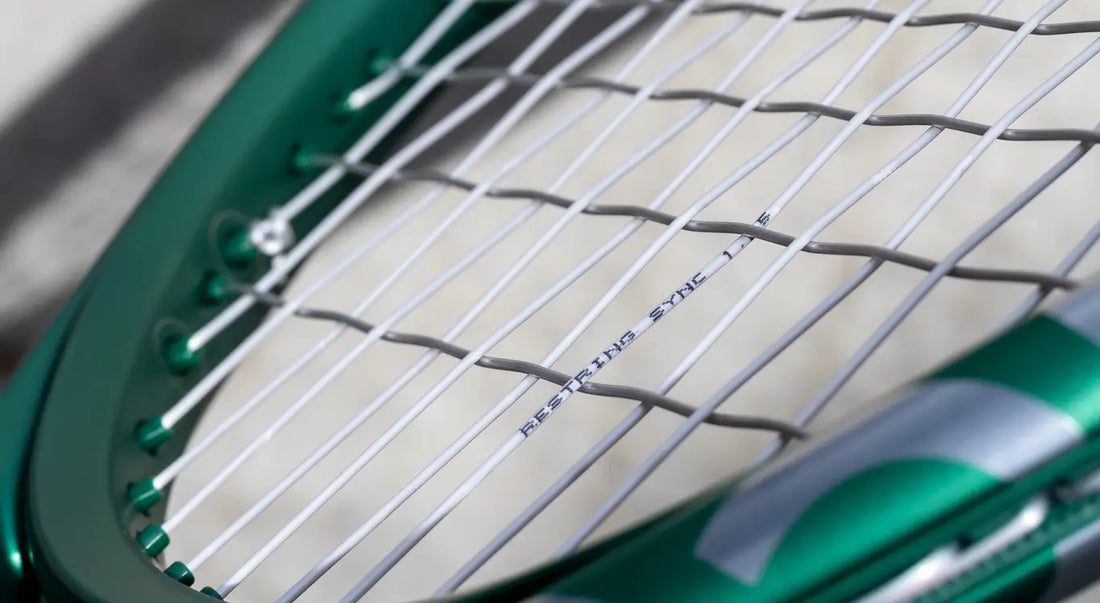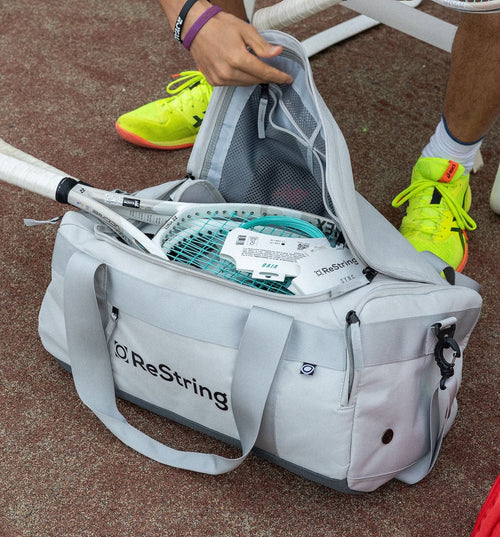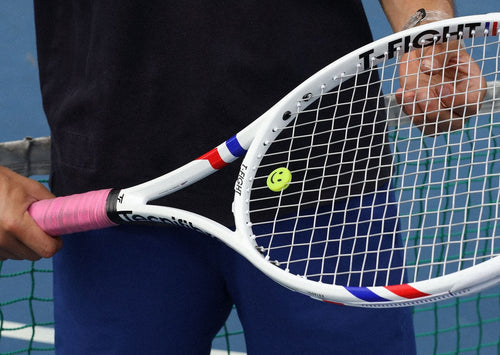Mains and Crosses Tension Differential: Get More Snapback
Juan
Do you string mains and crosses at the same tension?
If your goal is to maximise spin potential, then this is a big mistake that could cost you precious RPMs on every shot.
In this article, you'll learn exactly what a tension differential is, why higher mains tension creates better snapback, and how WTA Pro Cristina Bucsa implements this pro-level technique with Zero and Sync in her game.
What is a Tension Differential?
A tension differential refers to the practice of stringing your tennis racket with different tensions for the main strings and cross strings. The mains are the vertical strings that run parallel to the handle, while crosses are the horizontal strings running perpendicular to them.
Main strings account for approximately 70% of your racket's performance characteristics, while cross strings contribute the remaining 30%. This important distinction helps explain why many players and professional stringers pay close attention to how they configure their string beds.

Tension plays a critical role in determining your racket's playability. Higher tension generally provides more control and precision but less power, while lower tension offers more power and comfort but potentially less control.
There are three primary options when stringing mains and crosses.
First, you can string both at equal tension for a consistent and predictable playing experience across the string bed. Second, you can string crosses at higher tension, although this is less common and typically only used when the cross string is more elastic than the main string. Third, and what we recommend, is stringing mains at higher tension than crosses for reasons we'll explore in the next section.
Benefits of Stringing Mains at a Higher Tension Than Crosses
Stringing your mains tighter than your crosses by 2-3 lbs offers several clear advantages for your game. First, the tighter main strings give you better stability and control over where your shots land. You'll notice improved accuracy, especially on directional shots.
The looser cross strings work together with the tight mains to create a performance boost. With less tension in the crosses, there's less friction between all the strings. This allows the strings to move more freely and return to position quickly after hitting the ball. This movement is what we call snapback.
When strings snap back efficiently, they grip the ball better during contact. This creates more spin on your shots, giving you better control and allowing you to hit with more confidence. If you're a player who relies on topspin to keep balls in play while hitting with pace, you'll immediately notice the difference.
This technique works especially well with strings designed for maximum snapback, like Zero and Sync. These strings already excel at snapback, so using a tension differential simply brings out their best qualities.
Even though high-performance strings like Zero and Sync already provide excellent snapback, if you want to maximize spin production, this stringing method will help you get the most from your equipment.
ReString Tension Example
ReString athlete and WTA Pro Cristina Bucsa uses a hybrid setup that perfectly demonstrates this concept in action.
Bucsa strings her racket with Zero in the mains. Zero is a hexagonal co-poly string specifically designed for maximum bite and snapback. For her crosses, she chooses Sync, a round co-poly that provides excellent control and feel.
Her tension setup maintains a consistent 2-pound differential, with Zero strung at 50 pounds and Sync at 48 pounds. This small but significant difference creates the optimal environment for string movement while maintaining control.
The results speak for themselves. This tension differential creates enhanced movement that generates electric snapback from the Zero mains on aggressive shots, while the Sync crosses help maintain precise control. The combination allows her to create sharper angles with better net clearance.
Ultimately, this setup helps her play with more pace and power through the court while maintaining the control she needs at the professional level.
Conclusion
Stringing your mains at a higher tension than your crosses creates an optimal combination for performance tennis.
This tension differential reduces friction between strings, allowing for better snapback and increased spin potential. The tighter mains provide stability and control, while the looser crosses enable string movement.
If you want to experience these benefits yourself, try Zero or Sync with a tension differential for your next restring.






















